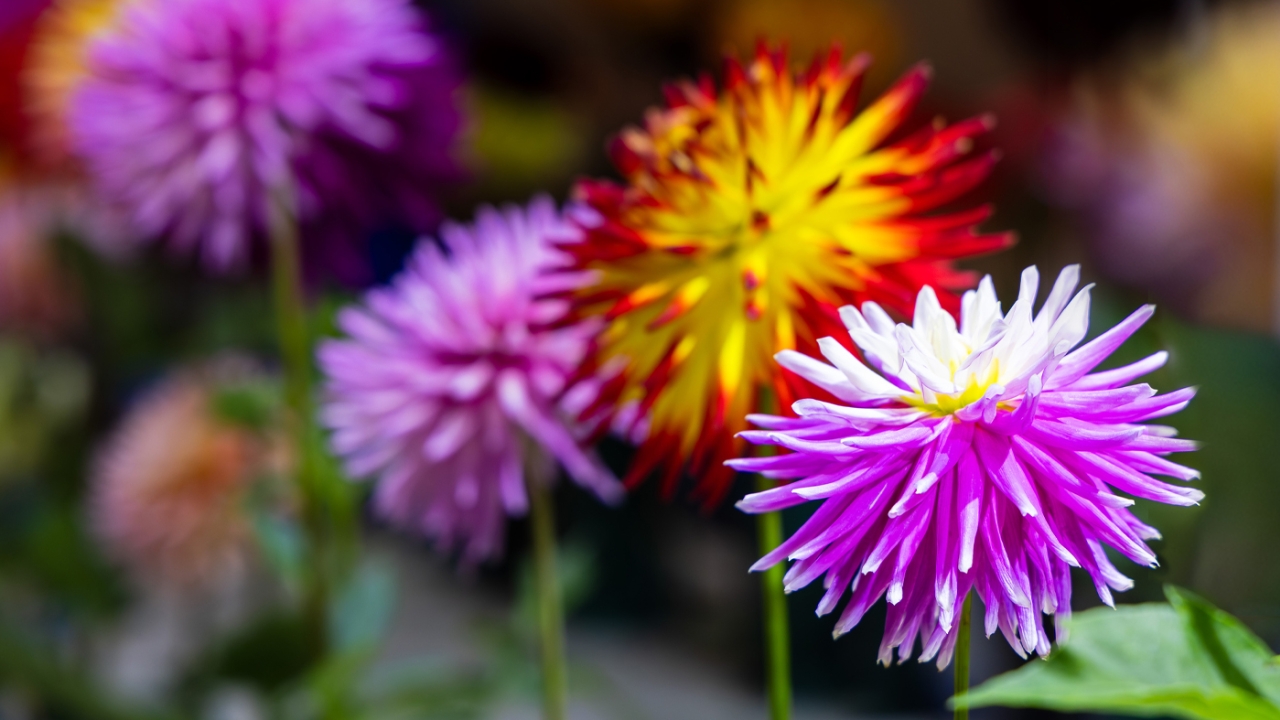

Smart Gardener
Zinnias: The Hardest-Working Flower in the Summer Garden
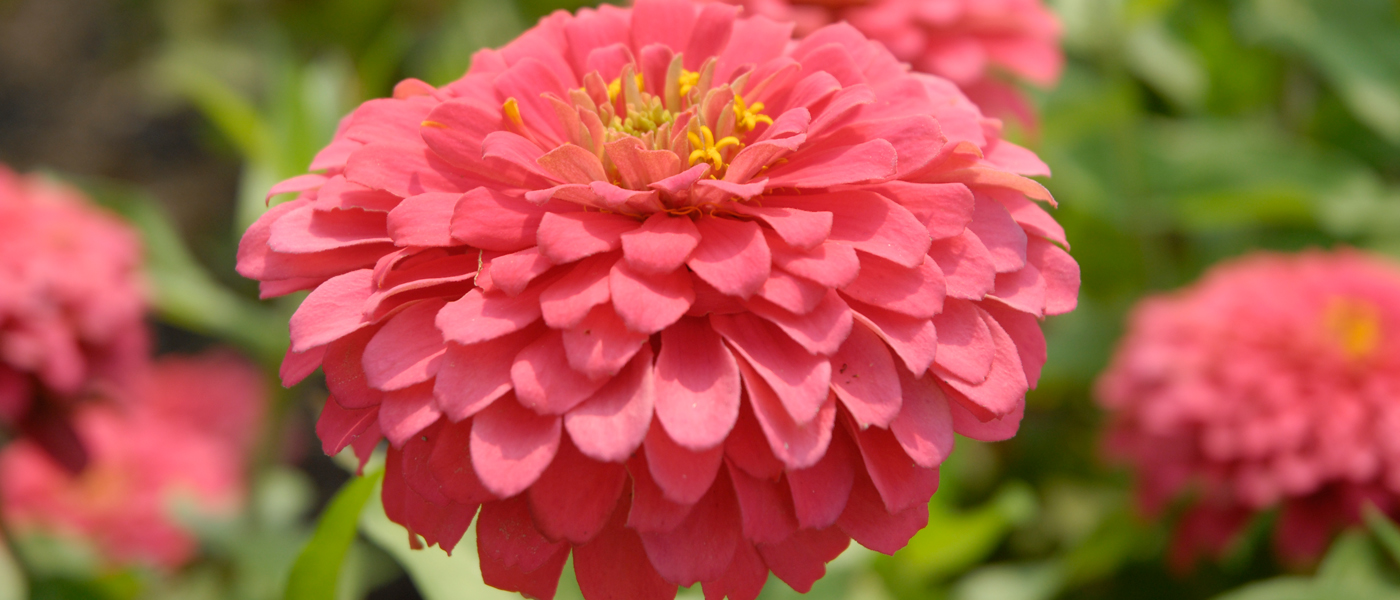
In summer, gardening requires plants with three key qualities: low maintenance (it's hot out there), heat and drought tolerance (ditto), and brilliant color—the brighter the better.
Zinnias fit the bill on all three counts. And more. In fact, they're one of the best flowers that smart gardeners can put to work in their gardens.
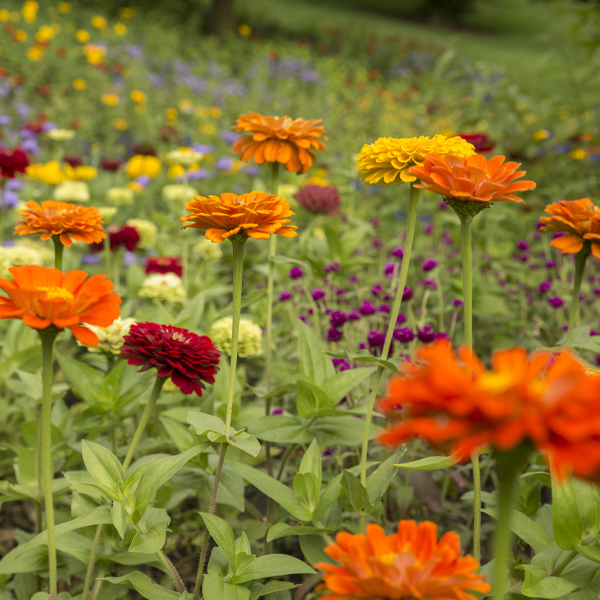
Zinnias are planted in nearly every one of our 27 display gardens.
One of the best for cut flowers, 'Benary's Giant' (1,000 of them!) makes a big statement in the English Oak Meadow.
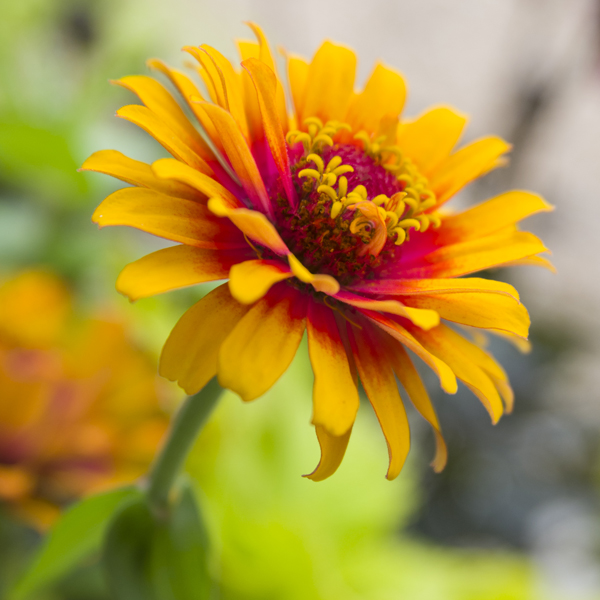
Yellow Flame zinnia (Zinnia elegans 'Zowie! Yellow Flame')
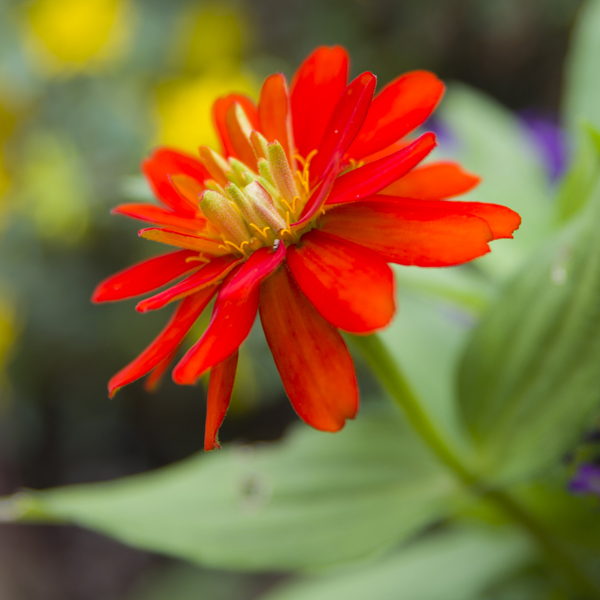
Planted in the Enabling Garden, Double Zahara Fire (Zinnia marylandica)
is part of the series that is powdery mildew-resistant.
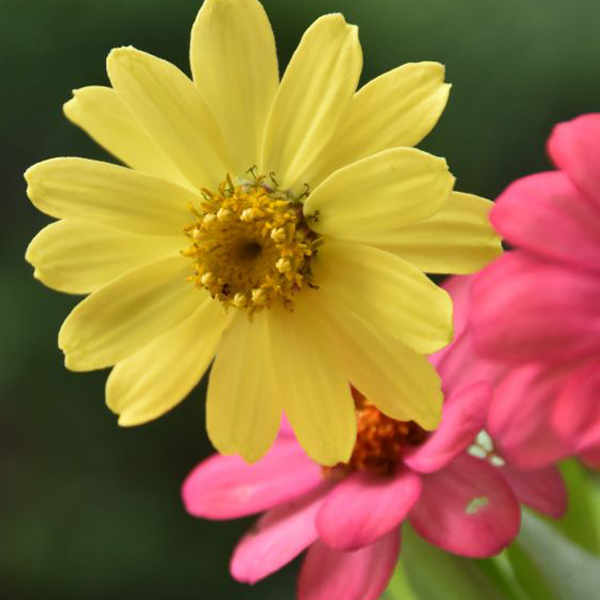
Zahara™ Coral Rose zinnia (Zinnia Marylandica)
is an outstanding performer with low water needs for your summer garden.
Zinnias work fast
If there's an easier flower to grow, we'd like to know about it. Zinnias are annuals, meaning that they go from seed to flower to seed quickly. Zinnias' pointy seeds, shaped like little arrowheads, require only basic garden prep to sprout: sow them in well-drained soil, where there's full sun and lots of summer heat, and you'll have tiny seedlings in days, with flowers powering up in just a few weeks. No perennial can claim that speed!
One gardening friend doesn't even bother to prepare her soil—she simply sprinkles seeds wherever she'd like a few zinnias, waters those spots for a couple of days, and lets zinnias' easy-to-grow nature take its course.
Zinnias work wherever you need color
'Pop Art'. 'Green Envy'. 'Persian Carpet'. 'Candy Cane'. With variety names like that, you know you're in for color. Zinnias come in a preposterous palette of every bright and pastel (except the blues), plus bi-colors, tri-colors, and crazy-quilt mixes designed for cutting, to attract pollinators, etc.
Aside from fresh color, many new zinnia series offer height and width options, too.
- While the tall versions of Zinnia elegans remain the classic choice for the back of the border, shorter series now challenge the low ground once ceded to marigolds and petunias. The Magellan Series stay close to knee high at 14 inches, while the Thumbelina Series of dwarf zinnias peak at 6 to 8 inches.
- Creeping or spreading Zinnia angustifolia, such as the Crystal Series, are a revelation for the front of the border, raised beds, containers, and even ground covers. This Mexican native is the go-to species for hot spots like sidewalk beds or that no-man's-land beside the garage, since it's even more drought tolerant than common zinnias.
- Zahara™ zinnias top out at just 8 to 12 inches—and are prized for their resistance to powdery mildew and leaf spot (see below). Zahara Yellow is short but sweet—we paired it with petite sunflowers in the entry beds at the Regenstein Fruit & Vegetable Garden.
Zinnias work as cut flowers
Zinnias have style, in addition to long, strong stems, so they are naturally destined for the vase.
Wonderful language gets used when describing zinnia flowers: stars and daisies, dahlias and spiders, buttons and domes, and quill-leaf cactus. Flowers can be "singles," with petals lined up in a row around an open center, or semi-doubles, or doubles. All work marvelously in floral arrangements.
Of course, the tall varieties are the zinnias of choice for cutting: 'Benary's Giant' is famous for its three-foot-tall, sturdy stems and large flowers. Cut zinnia stems at an angle just above a bud joint. Zinnias are typically long-lasting in a vase—strip the stems of all but the most visible leaves before setting them in water.
Zinnias cut your workload
Zinnias are low maintenance. Since they're fast-growing, they shade out weeds. They don't require much in the way of fertilizing (just an occasional well-balanced mix), and they don't need mulching.
Deadheading helps to produce more flowers. No time to deadhead? The Zaharas mentioned in the sidebard are self-cleaning—a real time saver when it comes to a large bed.
Like Zaharas, the Profusion Series (hybrids between Z. elegans and Z. angustifolia) are resistant to the scourge of zinnias: powdery mildew.
Because zinnias are native to the grasslands of the southwestern states, Mexico, and South America, they know how to handle dry conditions. But wet summers (we've had one so far) can take their toll. And that can lead to powdery mildew and leaf spot. Three suggestions for dealing with wet conditions:
- Water only when needed, and then only at the base of the plants. Wet leaves can promote mildew development, and splashing water can transfer fungus from the ground onto zinnia leaves in an instant.
- Camouflage tall, more mildew-prone varieties with other plants in the foreground.
- Do both #1 and #2 and live with the fact that zinnia leaves (but not flowers) are affected by wet weather—as one horticulturist put it, "Even when zinnias are covered in powdery mildew, they're covered in flowers."
Zinnias work year after year
It's easy to save zinnia seeds. Simply let the flowers dry fully on the stem, then collect the seedheads and lightly crush them in your hand to release next year's seed crop. Store in a cool, dry place as you do other seeds. (And set some aside in a labeled envelope for our Seed Swap next February!)
One last reason to plant zinnias year after year: they're butterfly magnets. The bigger-flowered varieties act like landing pads for nectar-seeking butterflies. (Same goes for hummingbirds.) Try tall zinnias with red or hot pink flowers to get the biggest draw.
Karen Zaworski is a garden writer and photographer who lives and gardens in Oak Park, Illinois.

